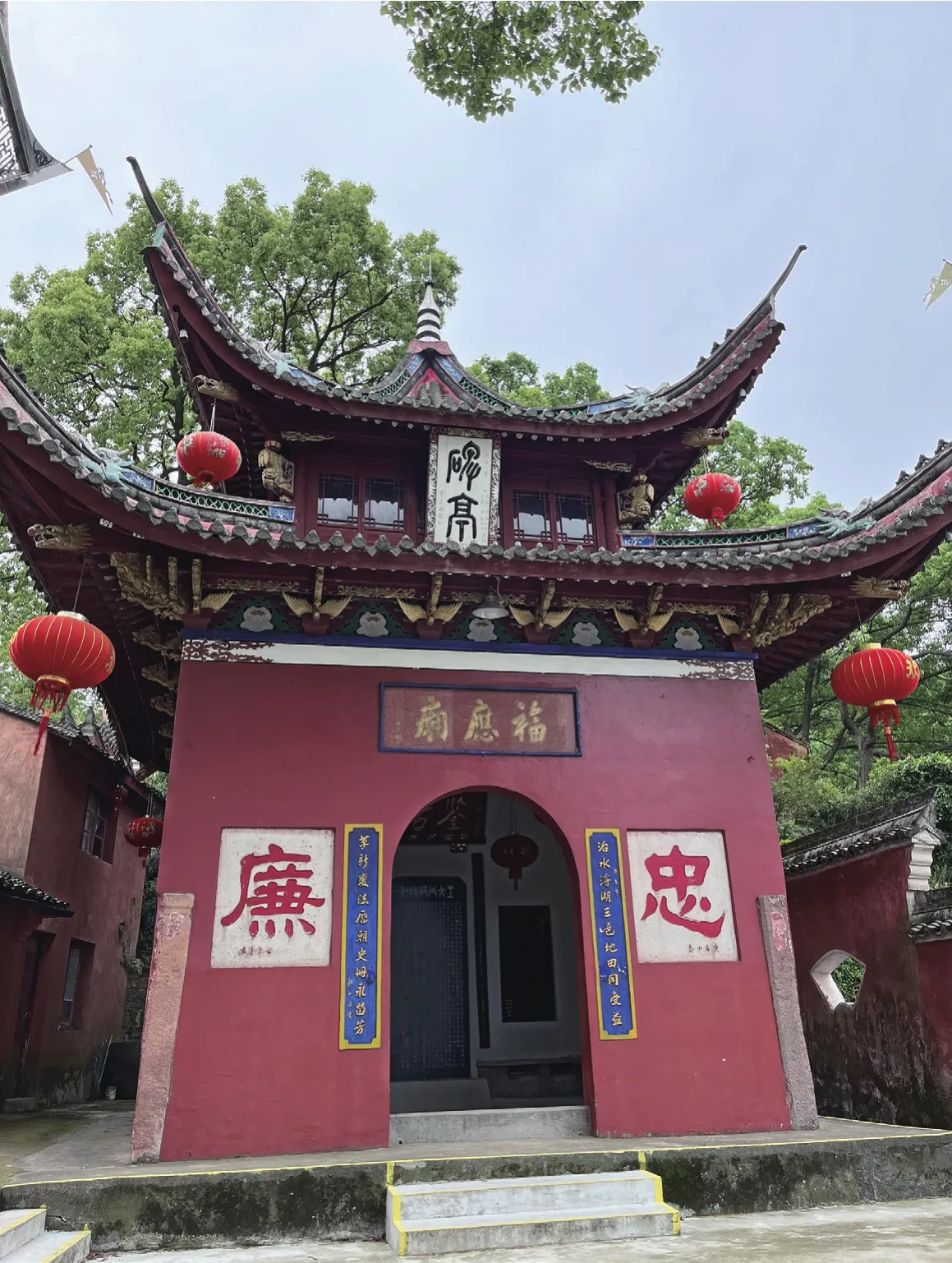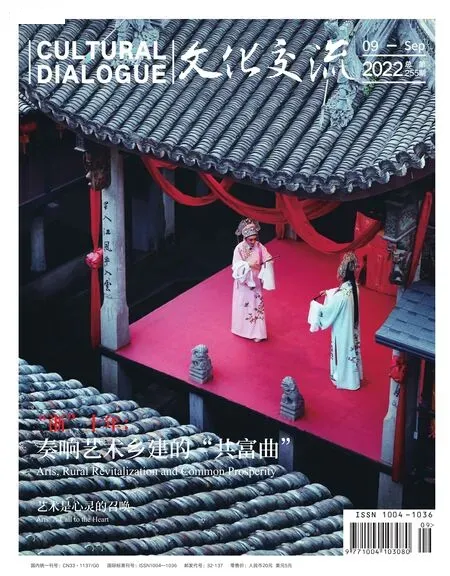王安石与宁波的故事
2022-09-26周东旭
文/周东旭
庆历七年(1047),二十七岁的王安石出任鄞县县令。当时的鄞县地域较广。史料记载,北宋淳化元年,鄞县地域有十九乡,即相当于现在的海曙区、鄞州区及北仑区的部分地域。熙宁六年(1073),析蓬莱、安期、富都三乡另建昌国县;十年(1077),又析灵岩、太丘、海晏三乡给定海县(后称镇海县,今北仑区)。此后,全县为十三乡。
为官一任,造福一方。方志上的记录只有简单的数语:“仁宗庆历七年(1047)调知鄞县,殚心水利,必躬历其地。邑人王鄞江先生安贫乐道,公师事之。没则铭其墓。又因孔子庙为学校,教养县子弟,请慈溪杜先生醇为师。尝贷谷与民,令立息以偿,俾新陈相易。复严保伍之法。”但细推起来,可以概括为王安石在教育、水利、农业、民生等各方面的政策措施,对宁波影响极大。宁波人也经常用“治鄞一千天,影响一千年”来形容王安石治鄞,而且留下许多庙宇祭祀王安石,现在也有许多遗迹,据说是王安石留下的。
县署与县学
鄞县县署,自然是县官老爷办公的地方。现在宁波中心城区海曙区还有一条叫县前街的街巷,街北就是海曙区政府,原来即是鄞县县署。不过这里是明清时的鄞县县署,据闻性道《鄞县志》记载,从唐代大历间,鄮县的县衙正对开明坊,即如今开明街与中山路东西交界的位置。鄮县在五代后梁开平三年(909)因为梁太祖的祖父名叫朱茂琳,鄮字的音与茂重,需要避讳,乃选用鄞字作为县名。“开明坊,坊在开明桥下,正对县门。县门左右,有义井各二。俱见《宝庆志图》。今为市舍所蔽,无从寻访。唐大历间(766—779),自小溪州城移鄮县于此。长庆间(821—824),并徙州治,而县仍附郭。后梁开平三年(909)因避其祖讳茂,改鄮为鄞,宋因之。今为城守营守备署。”宋时鄞县县署,大概在现在的县前街的东侧。这就是王安石办公的县署。

宁波县学街。The Xianxue Street in Ningbo city.
皇祐元年(1049)二月,王安石在县署颁布《善救方》。他在颁行医方的序文中称:“臣等虽贱,实受命治民,不推陛下之恩泽而致之民,则恐得罪于天下而无所辞诛。谨以刻石,树之县门外左,令观赴者自得而不求有司云。”从文章来看,这是一项当时朝廷的要求,王安石作为鄞县地方长官,颁行此医方是分内之事,他将其刻石于县门之外,以便士民随时按需取用。
现在宁波城内还有一条县学街,县学即为鄞县县学,不过不是王安石时代的县学,王安石时代的县学在县治边上。庆历八年(1048年),王安石将县治附近建于唐代元和年间的鄞县孔庙作为学校,“鄞县始有县学”。邻县慈溪于北宋雍熙元年(984)即建慈溪县学。王安石任鄞县令后,羡慕慈溪之文风,在《慈溪县学记》中说:“天下不可一日而无政教,故学不可一日而亡于天下。”不久,他创办了鄞县的县学,并诚邀杜醇等享有盛名的慈溪学者前来任教。鄞县作为附廓县,有明州州学,就无需鄞县县学,但王安石不这么认为。
王安石创办县学,对宁波文化的影响是不可估量的。千年来,甬江流域产生了近3000名进士和13位状元,这在全国也不多见。而在学术上,从南宋的杨简到明清的王阳明、黄宗羲、万斯同、全祖望,哺育了中国学术史上著名的浙东学派,产生了一批中国早期民主主义的伟大启蒙者。而这一切,似乎就是从王安石开始的。鄞县的县学在南宋建炎年间毁于兵灾。嘉定十三年,丞相史弥远以旧址湫隘,命守俞建以宝云寺西威果指挥废营更之,于是,先圣始有殿从祀分列,春秋释奠礼行。匾其堂曰“养正”;东西设四斋:曰“观善”,曰“辨志”,曰“习说”,曰“敬业”。后屡圯。新中国成立后,县学改为第一医院,只剩县学门楼还在,是现今的一个文保点,虽然不起眼,但曾经也是一个龙门。

宁波东钱湖边纪念王安石的福应庙。Sitting by the Dongqian Lake in Ningbo, the Fuying Temple was built in memory of Wang Anshi.
鼓楼与祖关山
宋庆历八年(1048),明州太守王周重修奉国军楼的刻漏,新上任的鄞县县令王安石,特为奉国军楼的刻漏做了一篇《新刻漏铭》。
戊子王公,始治于明。丁亥孟冬,刻漏具成。追谓属人,嗟汝予铭。自古在昔,挈壶有职。匪器则弊,人亡政息。其政谓何,弗棘弗迟。君子小人,兴息维时。东方未明,自公召之。彼宁不勤,得罪于时。厥荒懈废,乃政之疵。呜呼有州,谨哉惟兹。兹惟其中,稗我后思。
刻漏,中国古代科学家发明的计时器。漏是指带孔的壶,刻是指附有刻度的浮箭。有泄水型和受水型两种。早期多为泄水型漏刻,水从漏壶孔流出,漏壶中的浮箭随水面下降,浮箭上的刻度指示时间。受水型漏刻的浮箭在受水壶中,随水面上升指示时间,为了得到均匀水流可置多级受水壶。
这篇短短的铭文,劝人们勤快、努力,不要快也不要慢,珍惜每分每秒。
宋代的奉国军楼,就是唐代明州子城的南城门。明代重修后,改名为海曙楼,现存建筑是晚清咸丰五年所建,民国时,在楼中间加了机械钟,现在依然为宁波人报时。这个建筑,宁波人俗称鼓楼,是宁波老城中最中心的建筑。是古代城市的标志。
祖关山在城南,现在宁波火站南站的边上,有一个祖关山公园。因为天台宗的高僧知礼法师塔在那里,所以取名为祖关山,山就是一个低矮的坡,上有崇法院,旧号焚化院。庆历八年六月十四日,王安石之女(王安石称女儿为“鄞女”)不幸早夭,十五日,葬于崇法院。鄞女刚满周岁,异常聪慧,大概王安石也感觉聪慧的孩子不属于他,他非常悲伤,在离任时,他还专门跟鄞女作别:“行年三十已衰翁,满眼忧伤只自攻。今夜扁舟来诀汝,死生从此各西东。”
东钱湖与广德湖
北宋时的鄞县东西都有大湖,东为东钱湖,西为广德湖,王安石主政时都疏浚过。
东钱湖,在鄞县东二十五里。名字的来历有两种说法,一种说是上承钱埭之水,所以名钱湖;另外一种说以有利于老百姓,又叫万金湖。宋代《宝庆四明志》记载:“在唐曰西湖,盖鄮县未徙时,湖在县治之西也。天宝三年,县令陆南金开广之。皇朝屡浚治。周回八十里,受七十二溪之流,四岸凡七堰,曰钱堰,曰大堰,曰莫枝堰,曰高湫堰,曰栗木堰,曰平湖堰,曰梅湖堰,水入则蓄,雨不时则闸而放之,鄞、定海七乡之田资其灌溉。”
东钱湖的东南两面依山,西北毗邻平原,东西宽6.5公里,南北长8.5公里,环湖周长45公里,湖面积19.89平方公里,是浙江省最大的淡水湖泊。西部以师姑山,笠大山为界,称谷子湖;东北以五里塘为界,称梅湖;其余大部分称外湖。
广德湖,又名罂脰湖,因其形状如盛酒器罂脰而得名。广德湖在今海曙区内,但在北宋末废湖为田,其大概的范围是北到高桥,南到桂林俞家,东到联丰新村,西到横街靠山脚的地方,中心是现在的集士港镇。
封建时代,农业水利是最为地方官员关心的,王安石在任上,对东钱湖与广德湖都进行了疏浚,清除湖中的葑草,划定湖的界线,不让目光短浅的富户占湖为田。虽然历代地方官都做过相应的工作,但王安石的工作更为突出,所以现在的钱湖边,既塑了王安石的像,也有以安石命名的路,更有好几个祭祀王安石的庙。这些都在默默诉说着曾经的大宋宰相青年时期兢兢业业、脚踏实地的累累业绩。

宁波东钱湖畔的国际会议中心。The International Convention Center by the Dongqian Lake in Ningbo.
Wang Anshi and His Stories in Ningbo
By Zhou Dongxu
In 1047, Wang Anshi (1021-1086), only 27 years old at the time, who would later become one of the most prominent politicians in the Song dynasty (860-1279), took up the position of magistrate in Yin county, which according to historical records was quite expansive in land at the time. It was roughly equal in area to the present-day Haishu district, Yinzhou district and part of Beilun district, all in Ningbo city.
As the county magistrate, Wang was supposed to do his best to serve the place, and he did what was expected of him and more.The official local gazetteer wrote of him, “In the seventh year of Qingli during the reign of Renzong Emperor of Song, Wang was appointed county magistrate of Yin county. He saw to it himself that the water and irrigation system be improved. He humbly asked for advice from a local gentleman and wrote epitaph for him after the gentleman passed away. He also established an academy in the county so that local children could receive education.”
All in all, Wang rolled out a series of measures in education,water management, agriculture, among others, to help improve the local people’s livelihood. Indeed, some argue that these policies were the precursors to the New Policies that he would later push through throughout the entire Song territory. Wang’s impact on Ningbo is such that local people often speak of his “staying in Yin for one thousand days, influencing it for one thousand years”.Indeed, in many temples, Wang is still worshipped and many historical sites are closely related to him.
On the north side of the Xianqian (literally “county government front”) Street in Haishu district, stands the district government office building, the site of which used to be the Yin county government office during the Ming (1368-1644) and Qing(1616-1911) dynasties. During the Song period, when Wang Anshi oversaw the county, his office, which no longer exists, sat on the east side of the street. In 1049, Wang wrote a preface for the(a collection of prescriptions commissioned by the emperor), and had the whole book engraved on stone outside the government office, so that more people could know and access it without having to apply through authorities.
In Ningbo, there is also a Xianxue (literally “county academy”)Street. In the city’s First Hospital, there is an old and ancient gate,the Lingxing Gate, which is the only remaining structure of the Confucius Temple in Yin county. When Wang came to the place,there had been no county academy. Admiring the neighboring Cixi county for its county academy and good education, he turned the Confucius Temple built in the Tang dynasty (618-907) near the county government into an academy, thefirst official one in the county. The impact could never be underestimated. Over the past thousand years, the number of people in this area who obtained the jinshi title, the highest degree in China’s imperial examinations, reached nearly 3,000, 13 of whom were top scorers,a rare accomplishment across China.

刻漏。Ke Lou, a traditional Chinese water clock.
Throughout history, Ningbo’s Drum Tower not only served as the south gate of its inner city, but also as the center of its outer city. It was alternatively known as the Qiao Tower, the Wanghaijun Gate (Tower), the Fengguojun Gate (Tower).
In 1048, the prefect of Mingzhou (present-day Ningbo)decided to rebuild the Fengguojun Tower, and on the occasion when the new tower was unveiled, Wang dedicated a piece specially for its, a traditional Chinese water clock.
In the “Epigraph on the New”, he exhorted the public to cherish every minute and work hard. He also wrote, “dealing with government affairs should be like the, neither too fast nor too slow.” Many have interpreted the epigraph as Wang expressing his ambitions to institute the reforms of the New Policies some 20 years later. Today, the Drum Tower, standing at the very center of Ningbo’s Old Town, still rings out time for the public.
In the southern part of the city, next to Ningbo South Railway Station, there is a Zuguan Mountain Park. While it is called a mountain, the place is more like a small hill or a big mound where Buddhist monks, prominent families as well as common people buried their deceased family members. It is also the place where Wang Anshi bade farewell to his beloved daughter,who was only a year old and died on the fourteenth day of the sixth lunar month in 1048. For the bereaved Wang Anshi, it was as if his daughter had never meant to belong to the place. As he left his magistrate office in Yin county for the capital to the west in 1050, Wang visited her grave once again and penned down the following poem in grief:
During the Northern Song dynasty (960-1127), two lakes, the Dongqian Lake and the Guangde Lake, were located on the eastern and western parts of Yin county respectively. When Wang Anshi was the magistrate, he had ordered the dredging of both lakes.
The Dongqian Lake is the largest freshwater lake in Zhejiang province, with a width of 6.5 kilometers from east to west and a length of 8.5 kilometers from north to south. The circumference of the lake is 45 kilometers, and the lake covers an area of 19.89 square kilometers. It is bounded by Shigu Mountain and Lida Mountain in the west — this part is called the Guzi Lake. It is bounded by Wulitang in the northeast and is called the Meihu Lake in that part. The rest parts of the Dongqian Lake are known as the Outer Lake.
The Guangde Lake is alternatively known as the Yingdou Lake, as it resembles the shape of a yingdou, a type of ancient wine vessel. The lake was situated in today’s Haishu district, but at the end of the Northern Song dynasty, it had been reclaimed and turned into farmland.
In ancient times, local officials were most concerned about agriculture and water conservancy. Wang Anshi’s dredging work on the Dongqian Lake and the Guangde Lake had undoubtedly significantly improved the livelihood of the local population, as statues of him had been built around the lake, roads were named after him and temples dedicated to him.

宁波三江口,甬江、姚江、奉化江在这里汇聚。肖奕叁/摄The Sanjiangkou in Ningbo, where the Yong River, the Yao River and the Fenghua River con fluence. Photo by Xiao Yisan.
